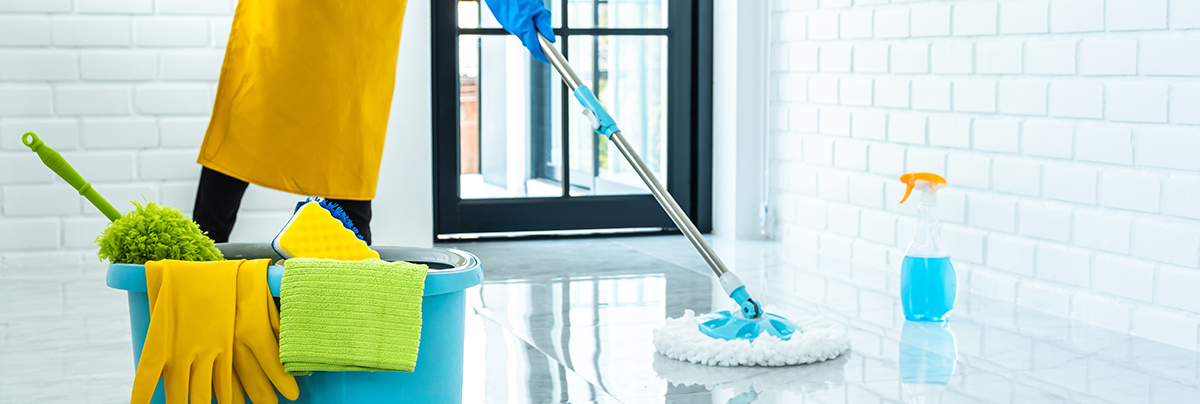The Environmental Impact of Cleaning Products

We all want to live and work in healthy, clean, and well-maintained spaces. Cleaning products helps in that pursuit. They remove dust, allergens, and germs from our indoor environment. Have you ever considered the environmental and health impacts of cleaning chemicals?
Environmental Impacts
Commercial use of cleaning products affects the indoor and outdoor environment and can lead to pollution and waste.
- Water Pollution – Thousands of chemicals from cleaning products are washed into streams and rivers. Some persist in the environment and enter the food chain.
- Air Pollution– In cleaning products, volatile organic compounds (VOC) can affect indoor air quality and add to outdoor smog. Plus, transportation leads to carbon emissions from trucks.
- Waste – Many containers are not made from recyclable materials. Packaging and empty bottles often end up in landfills. Hazardous materials may have a special requirement which usually requires energy for transport and disposal.
Health Hazards
According to the Bureau of Labor Statistics, about 2.1 million janitors1 work in the US. About 6% of janitors experience workplace injury from chemical exposure. That is just the professional custodial staff. All building occupants encounter cleaning products in one way or another. There are light cleaning tasks such as wiping desks and counters. Plus, anyone in the building can breathe in the volatile compounds from cleaning products.
The risk of adverse health impacts from chemical cleaning products is low at typical levels. Still, reducing potential hazards is an integral part of chemical management safety. Certain chemicals may irritate the skin, eyes, or throat. Some commercial-grade products may be hazardous in concentrated forms. Cleaning products enter the environment during regular use by rinsing down the drain or evaporating into volatile compounds. Residue can linger on surfaces and cleaning tools.
Why Buy Green?
Going green is better for the environment. Green Chemicals get the building clean with less indoor air pollution. They are also less harmful to custodial workers and building occupants. Buying concentrated cleaners lowers the impact of packaging and shipping. Green products often use reusable, reduced, or recyclable packaging. Using less hazardous products may reduce the costs of adequately disposing of leftover cleaners.
Green products should have some or all these characteristics:
- biodegradability
- low toxicity
- low VOC content
- minimal packaging
- produced with less energy
Purchasing considerations
When ordering cleaning products, consider functionality, cost, and environmental impact. Be wary of vague claims such as “eco-friendly,” as this has no clear definition. Organizations like Green Seal2 and Safer Choice3 review products for human health and environmental effects.
Purchasers should personally research the products they buy. Ask distributors and manufacturers to clarify and define their green claims. Two primary considerations are ingredients and shipping.
- What’s it made from?
Look at the ingredients. Avoid potentially harmful chemicals as much as possible. Instead, opt for renewable, biodegradable, and non-toxic products from pine oil, citrus, and seeds.
- How is it packaged and shipped?
Lightweight, efficient packaging leads to less waste. Opt for packaging that is recyclable and made from recycled materials. Using refillable bottles and concentrated products also cuts down on waste. Concentrated products reduce shipping volume and weight, reducing carbon emissions from transport. Follow the manufacturer’s instructions for diluting and handling concentrated formulas. Bulk purchases can lower the impact of shipping.
Socially responsible businesses take steps to prevent pollution and health risks. Developing a formal environmental management system helps a company define clear objectives for reducing its environmental impact. Take steps to reduce waste, lower emissions, and use materials efficiently. Reducing the environmental impact of cleaning products is better for employee health and the earth.
1. U.S. Bureau of Labor Statistics
2. Certified Products & Services
3. United States Environmental Protection Agency

